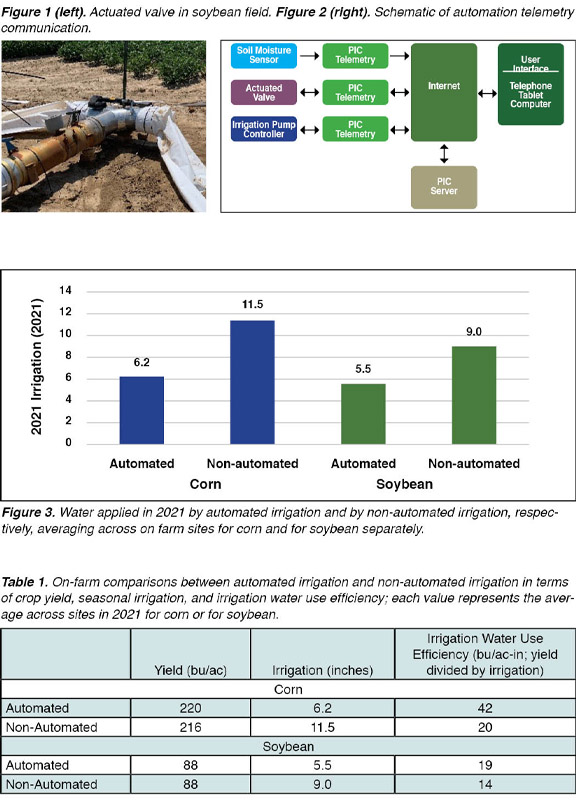Research Project
Identifying, Evaluating, and Demonstrating Sensor-Based Automation Irrigation Technologies in Corn and Soybean
Investigators: Drew Gholson, Mark Henry, Himmy Lo, Jason Krutz, Trent Irby, Eric Larson, Brian Mills, Nicolas Quintana Ashwell, Alex Deason, Gurpreet Kaur, Gurbir Singh
Funding Agency: Mississippi Soybean Promotion Board under project 13-2021, by Mississippi Corn Promotion Board under project 03-2021, and by the Conservation Innovation Grants program at USDA’s Natural Resources Conservation Service under award number NR203A750008G007
Date: 2021
Project Summary
Introduction
Declining aquifer levels, coupled with impending well monitoring, serve as a catalyst to improve water use efficiency. The RISER program has identified several technologies and management practices that have the potential to eliminate the 300,000 ac-ft/year overdraft on the Mississippi Alluvial Aquifer while ensuring that producers stay within permitted irrigation limits. However, the adoption of Best Management Practices (BMPs) by producers in the Mississippi Delta is minimal. The RISER (Row-crop Irrigation Science Extension and Research) Program serves as the primary means to facilitate the widespread adoption of the latest irrigation management research findings across the Mississippi Delta. This program focuses on identifying and evaluating innovative sensor and automation technologies that can assist producers with improving their on-farm irrigation management strategies and scheduling.
Materials and Methods
An on-farm experiment was conducted in 2020 and 2021 on multiple production farm locations throughout the Mississippi Delta on corn and soybean. Each demonstration farm consisted of two nearby irrigation wells and associated fields (irrigation sets) with similar soils and planting dates. One well served as a control (no change in technologies), and the other was equipped with pump controls, actuated valves (Figure 1), and soil moisture sensors enabled with telemetry capabilities (Figure 2). Predetermined templates set an irrigation time for each set and each field. These templates were programmed to the software, and the decision to irrigate was determined through field observations, soil moisture sensor readings, and weather outlook. The irrigation “spin” was initiated through the user interface. Sites were monitored throughout the growing season.
Results and Discussion
Information on irrigation application, pumping energy requirement, crop growth, and yield was collected at each field to document and display the impact of implementing irrigation automation technologies on conserving water and maintaining/ improving crop yield (Figure 3; Table 1). The functionality of actuated valves was also evaluated. If a low battery caused issues with valve opening and closing, the battery was replaced. At each site for all irrigations, the automated system made a successful run.
Conclusion
As labor continues to become one of the most significant concerns across the farming community, investigating tools that can decrease labor, assist in decision making, and save water is increasingly important. This study suggests that irrigation automation may be a beneficial tool for soybean and corn irrigation, saving water and time and ultimately conserving groundwater in the Mid-South. The next step will be to continue investigating the effectiveness of automation with the addition of more sites for statistical and economic analysis.
Project Photos

- Crop Type:
- Corn
- Soybean
- Topic:
- Irrigation
- Decision
- Technologies
Find Research
By Crop Type
By Topic
Contact NCAAR
General Information
Kaye Sullivan
vfs23@msstate.edu
662.390.8510
F:662.390.8501
Showcase Demo
Drew Gholson, Coordinator
drew.gholson@msstate.edu
662.390.8505
Himmy Lo
himmy.lo@msstate.edu
662.390.8509

